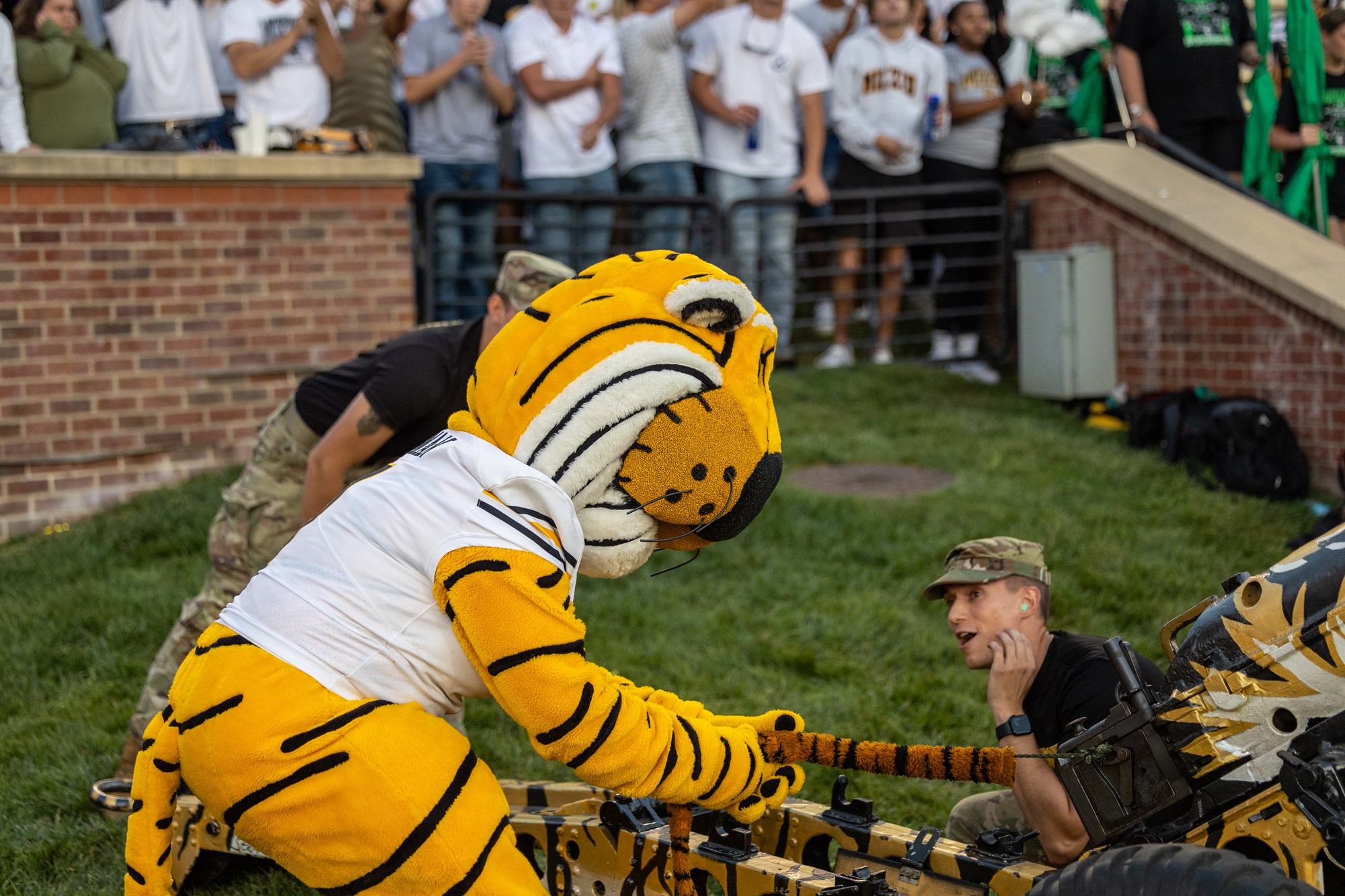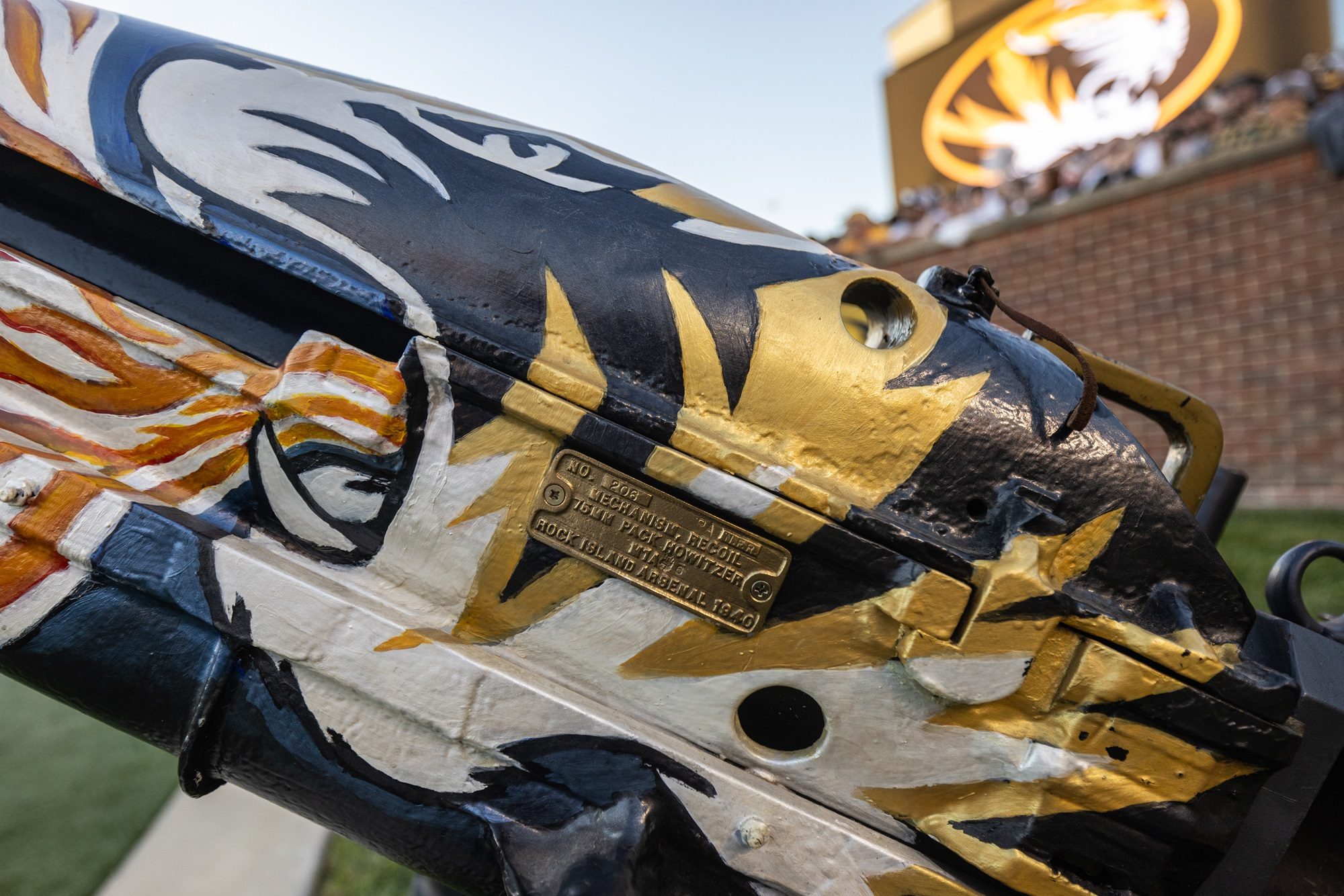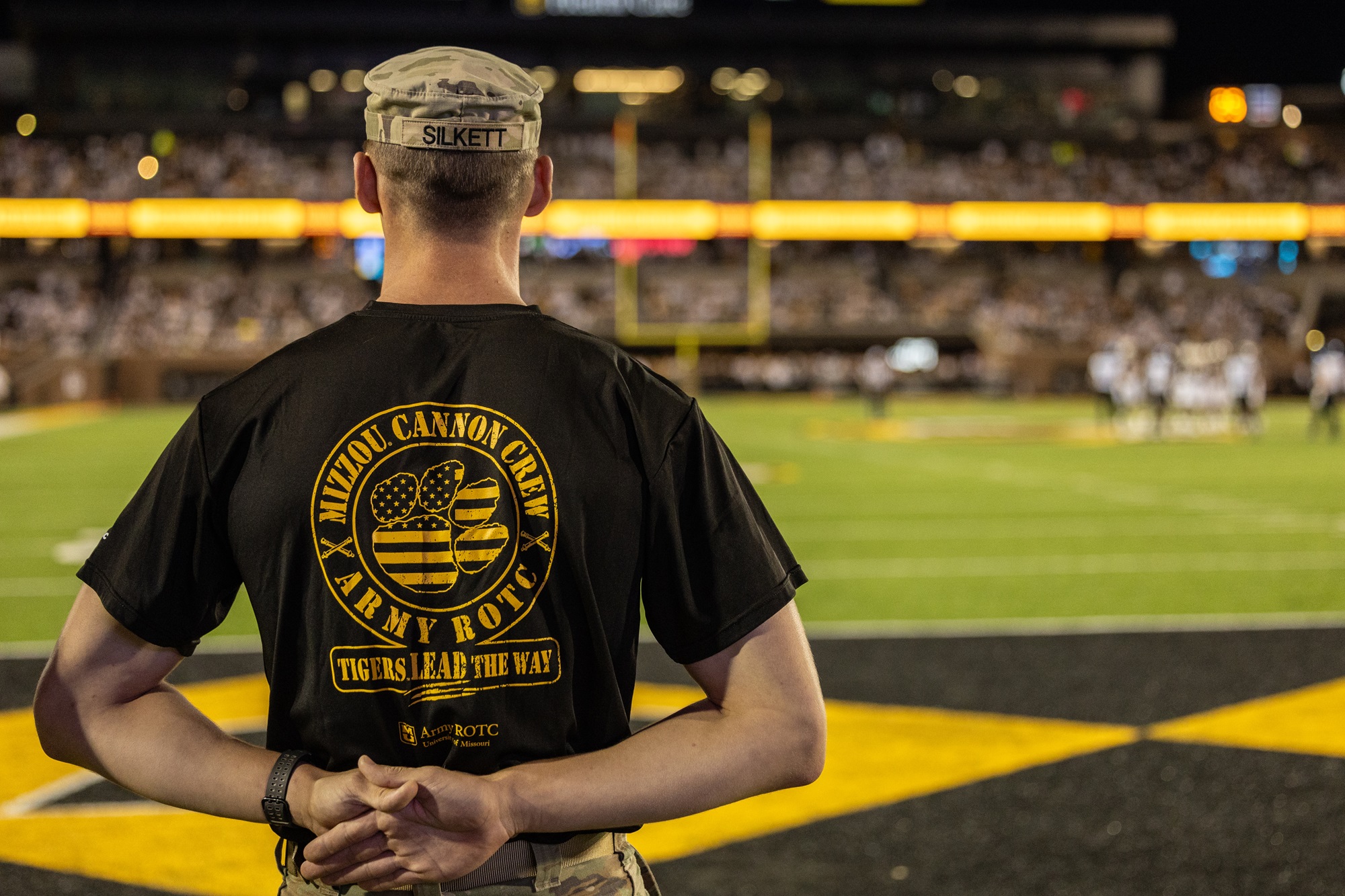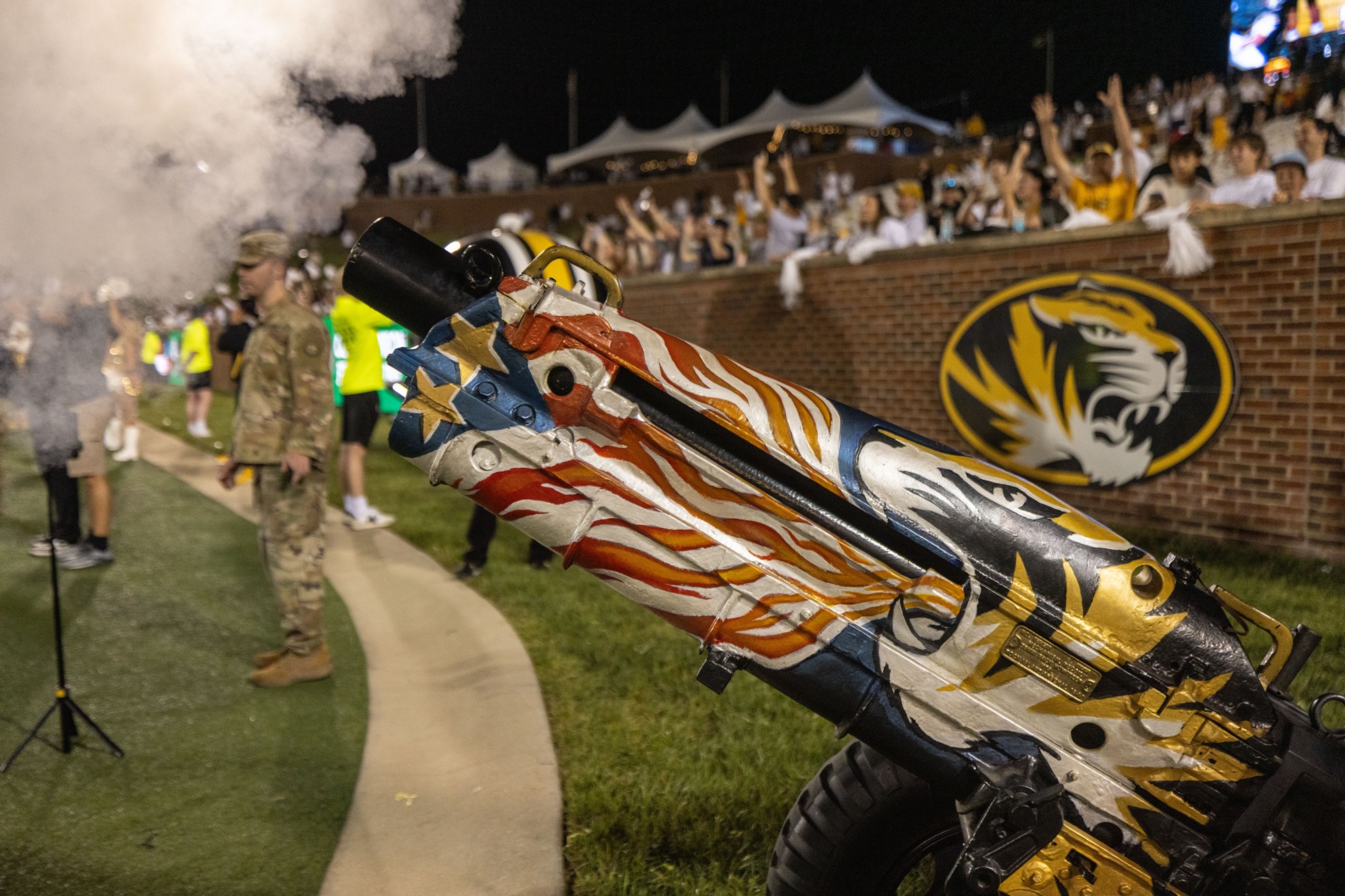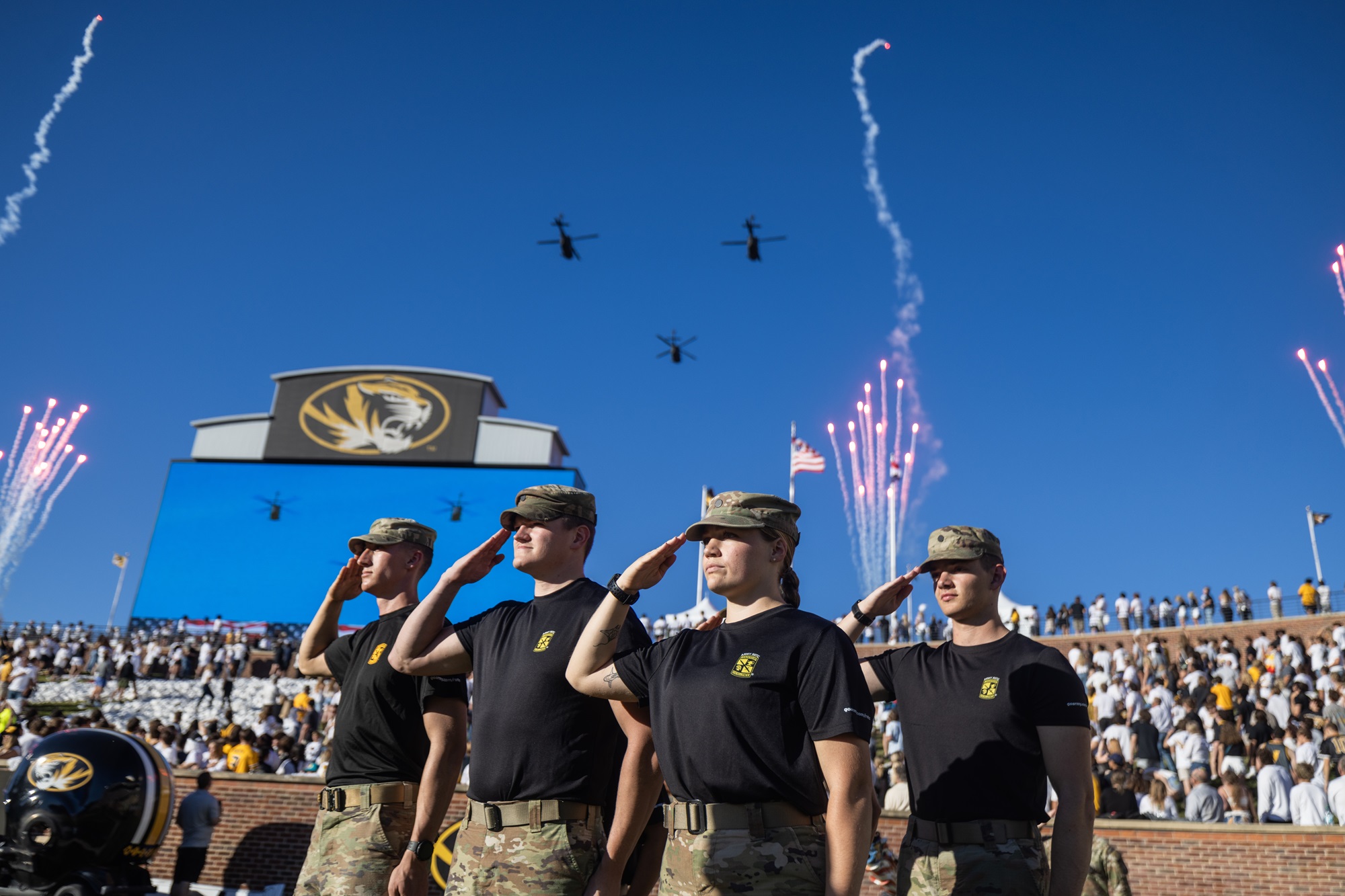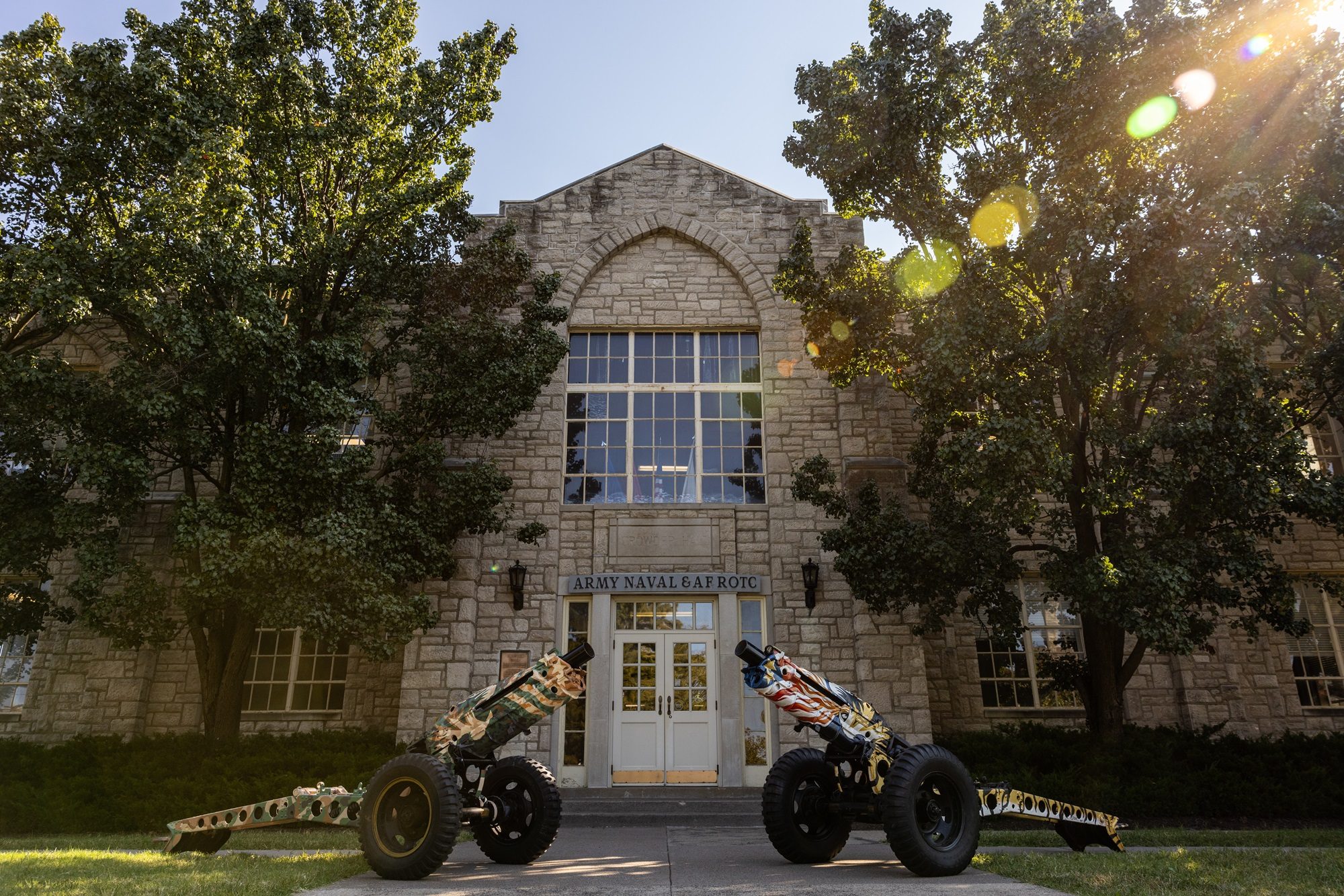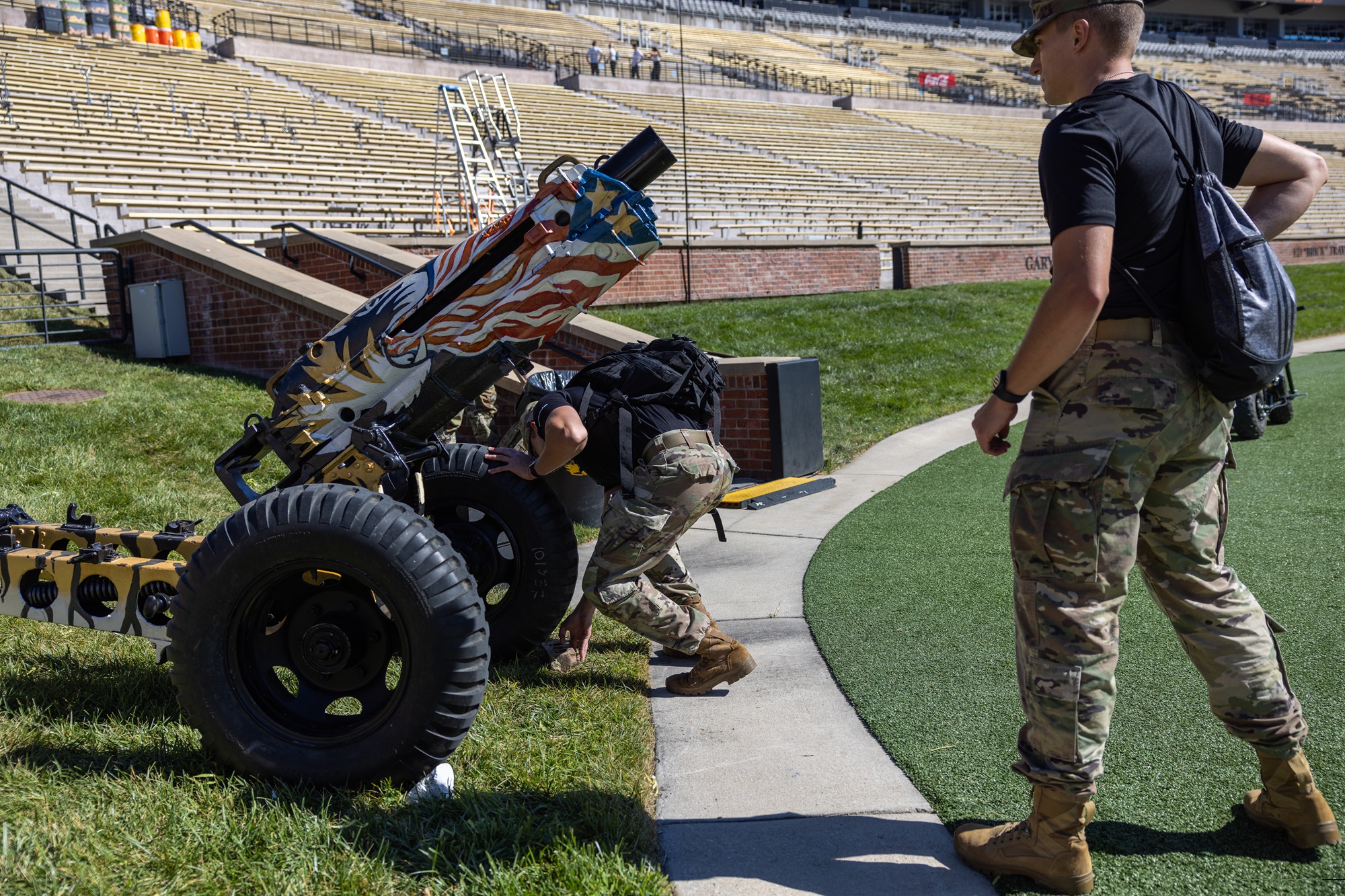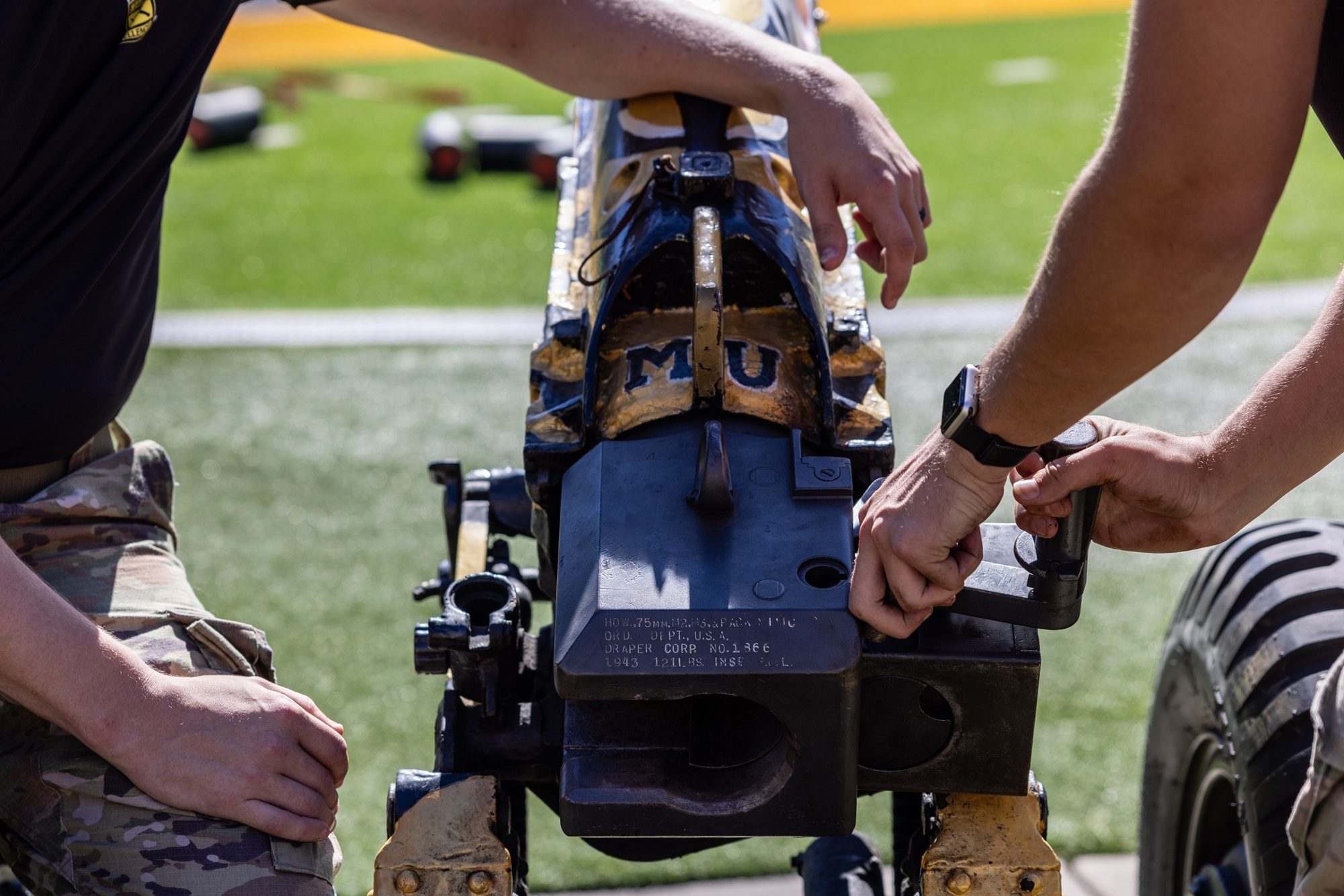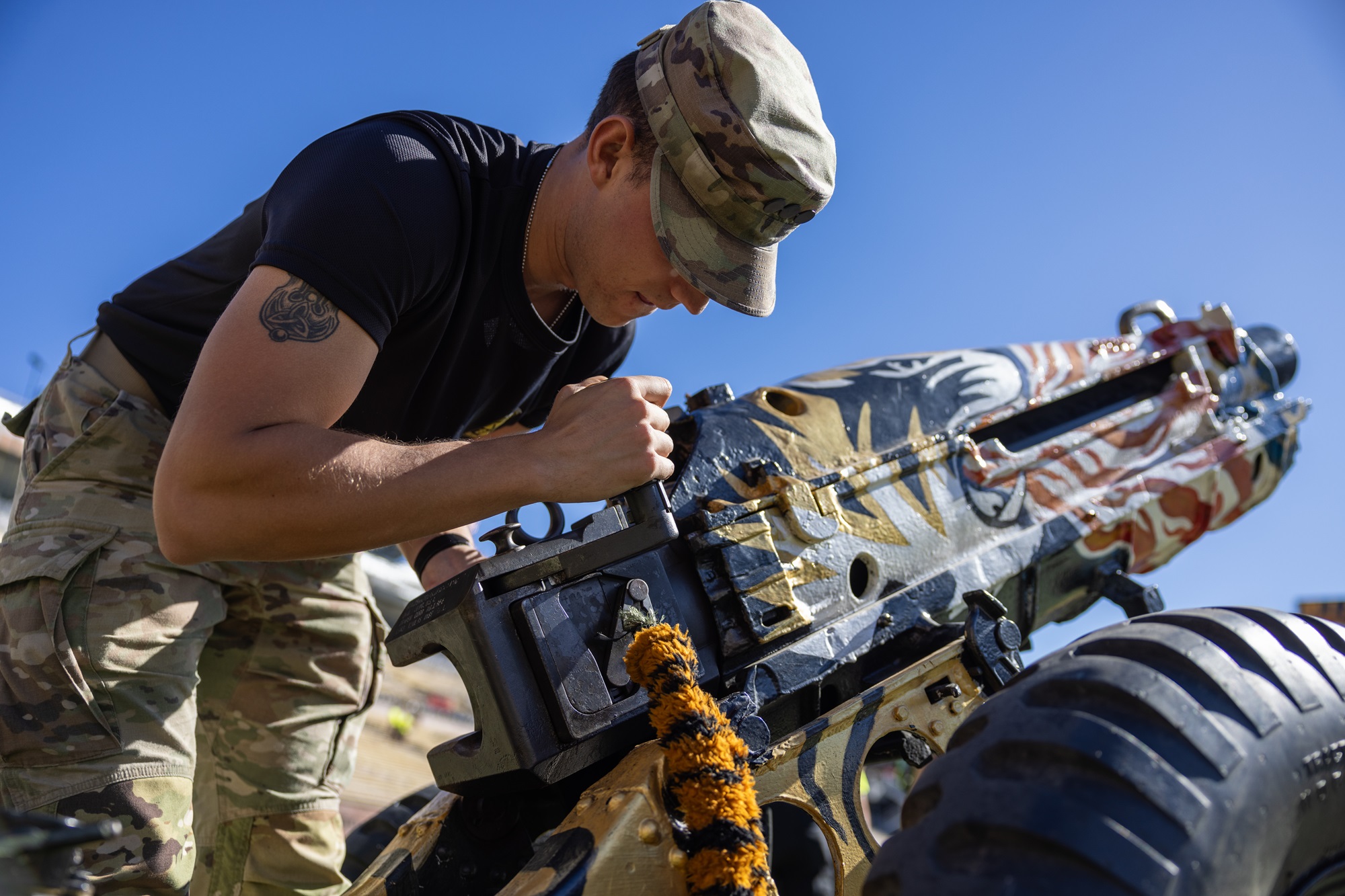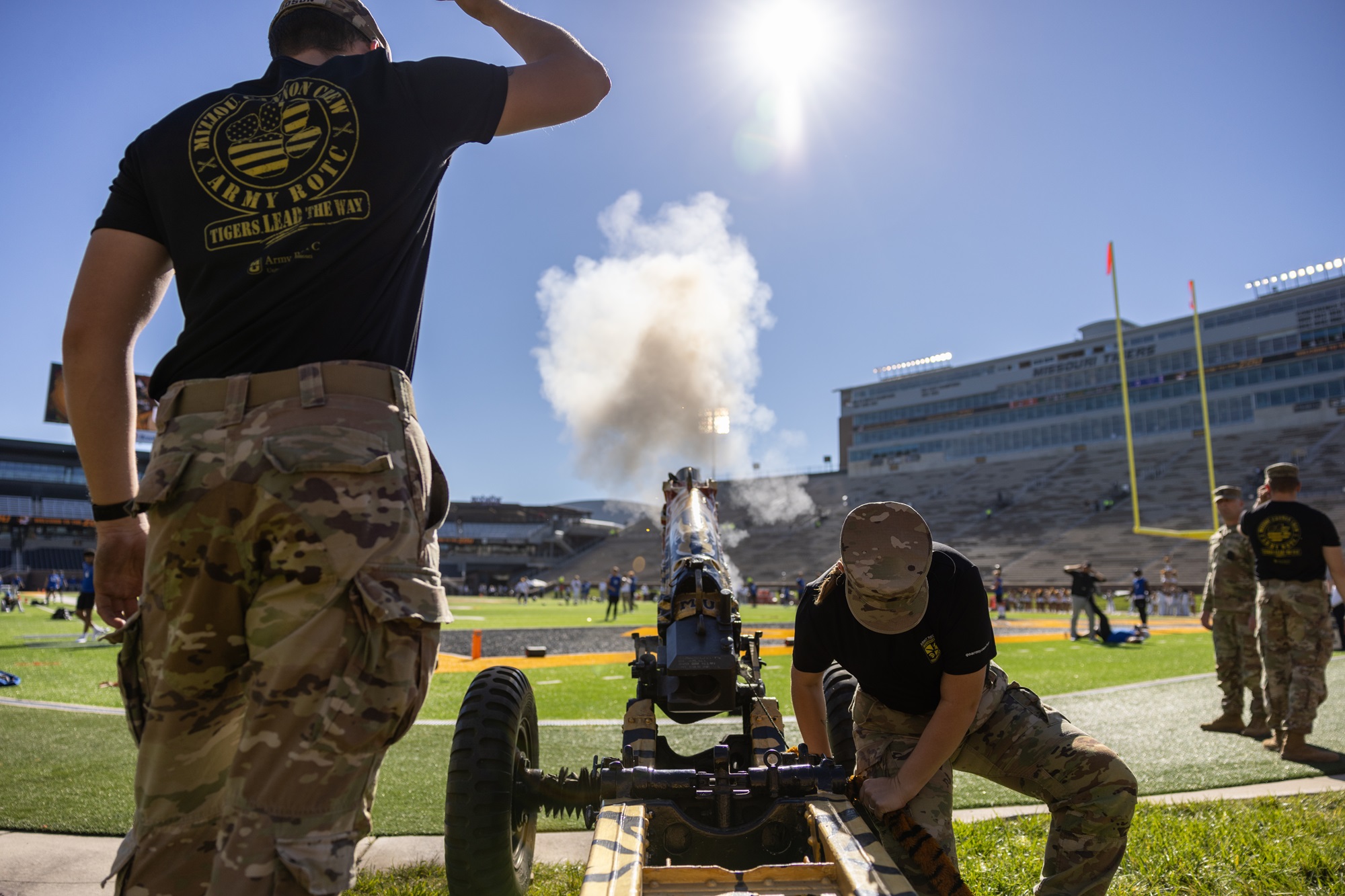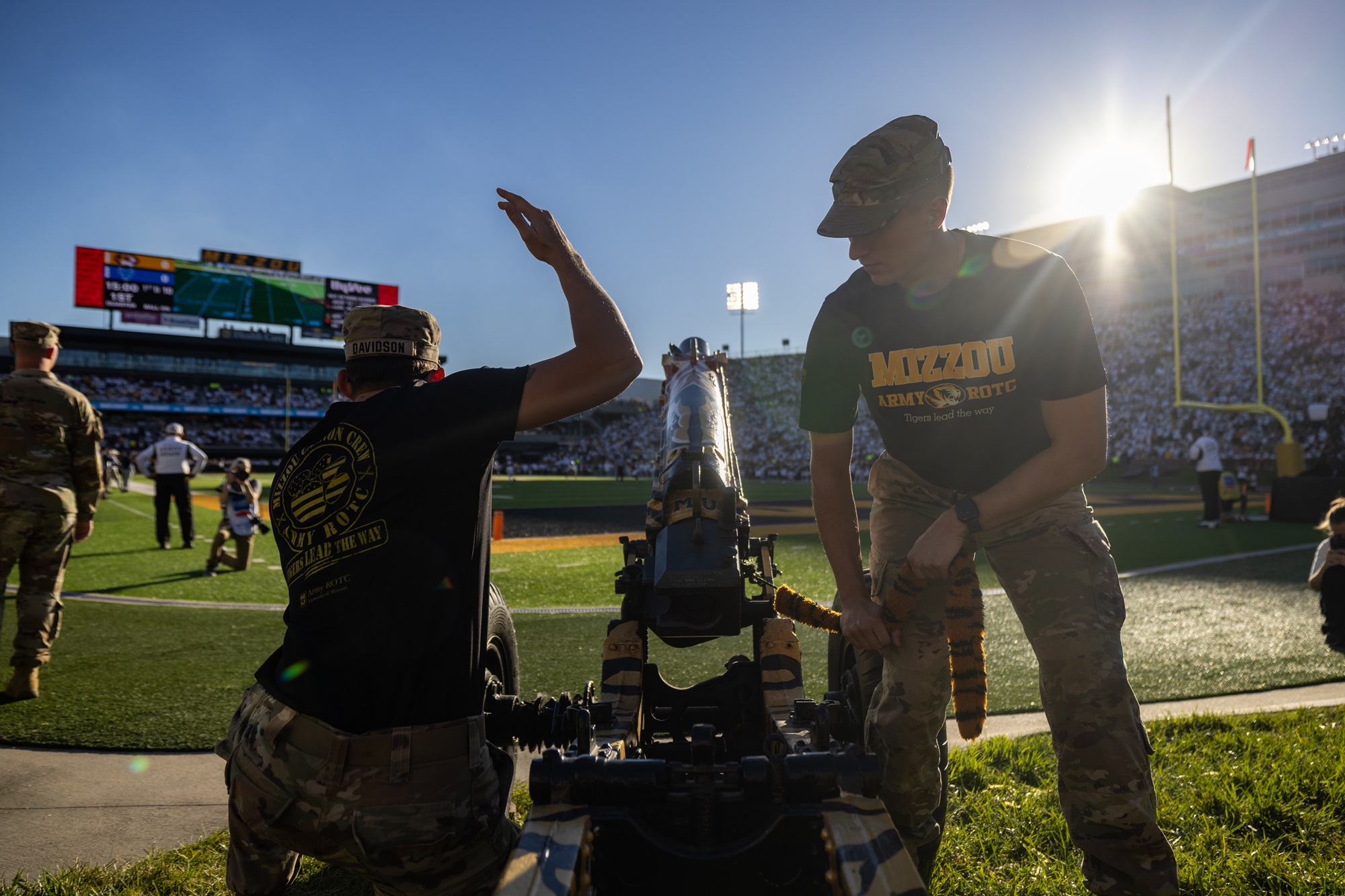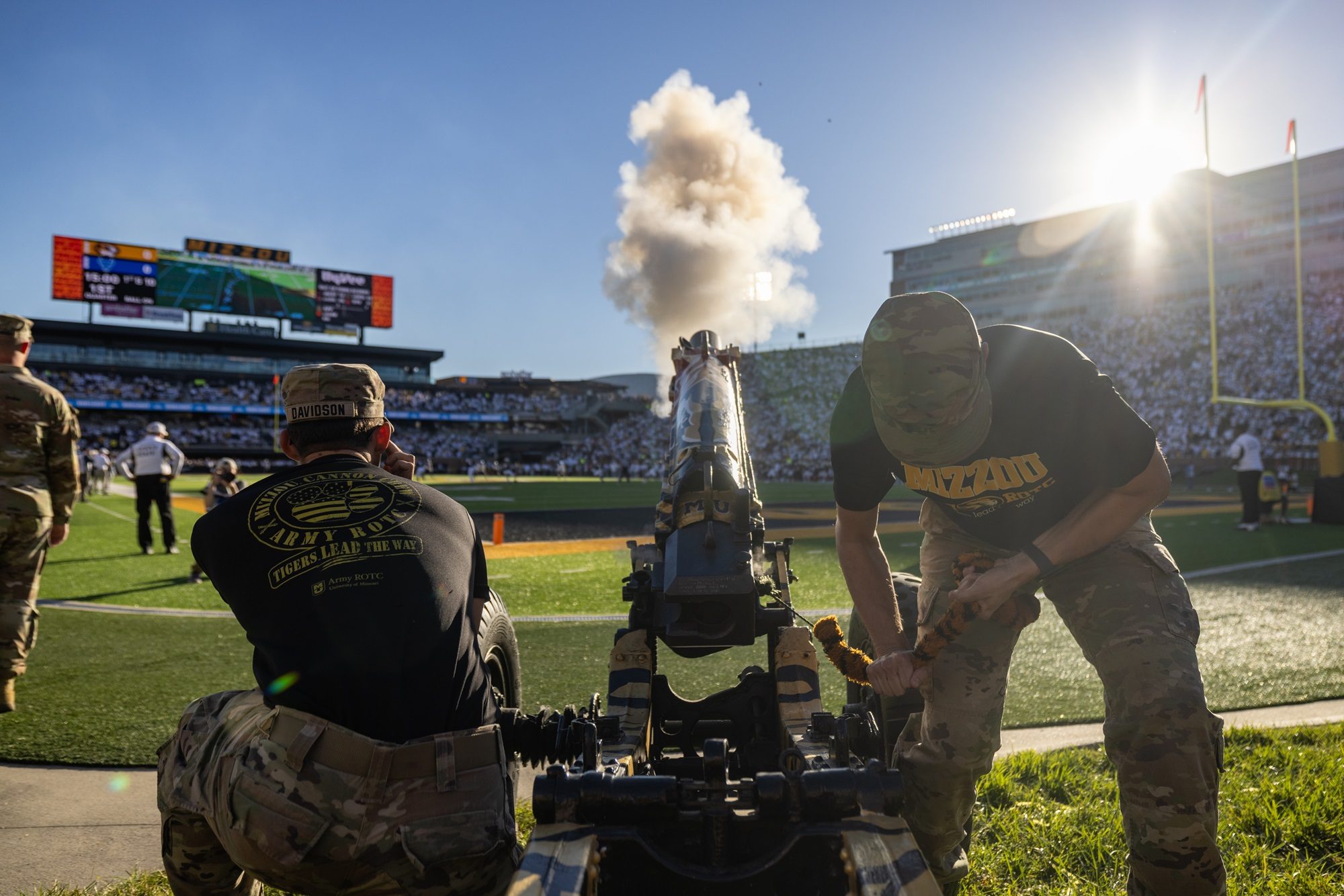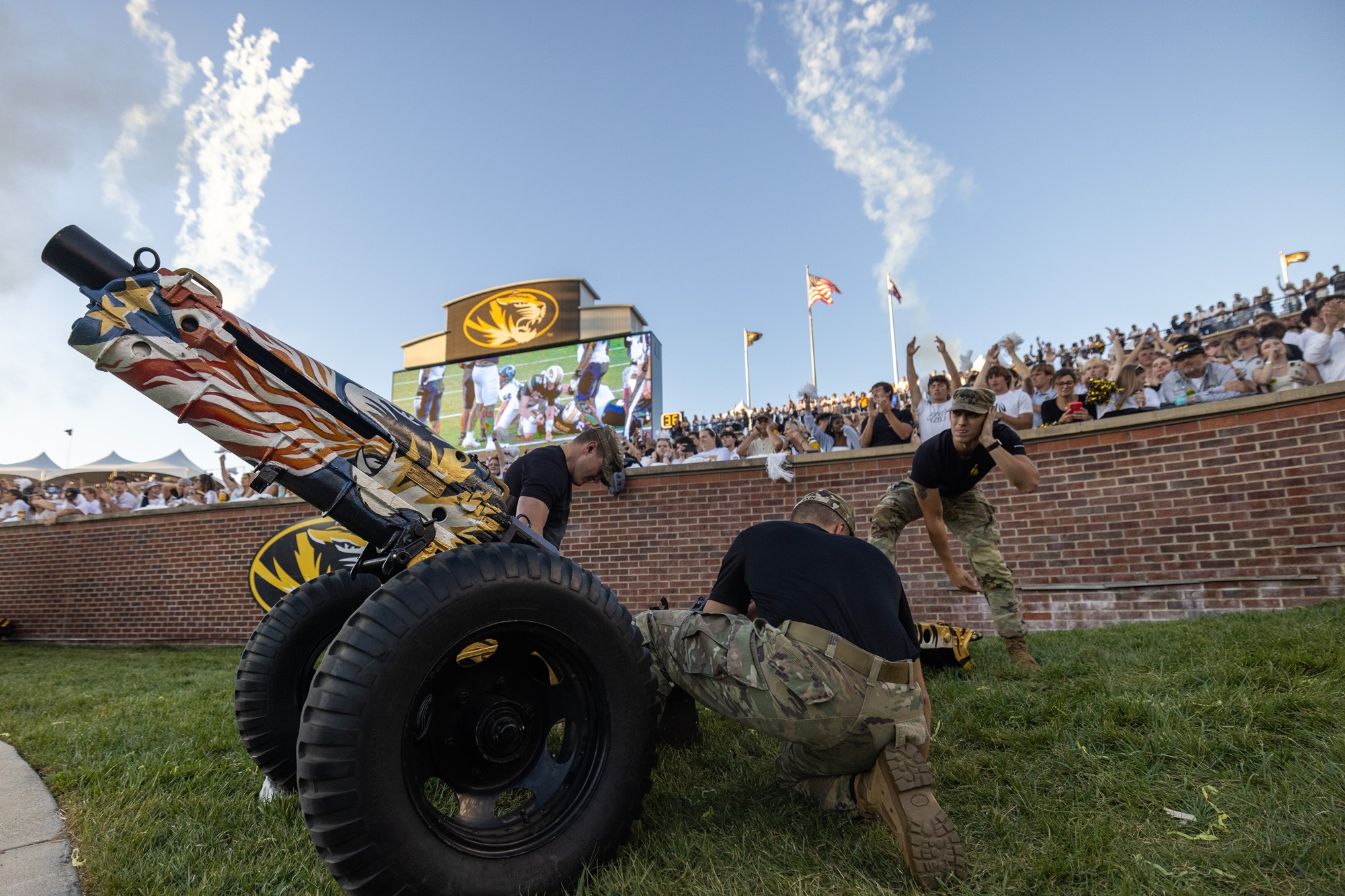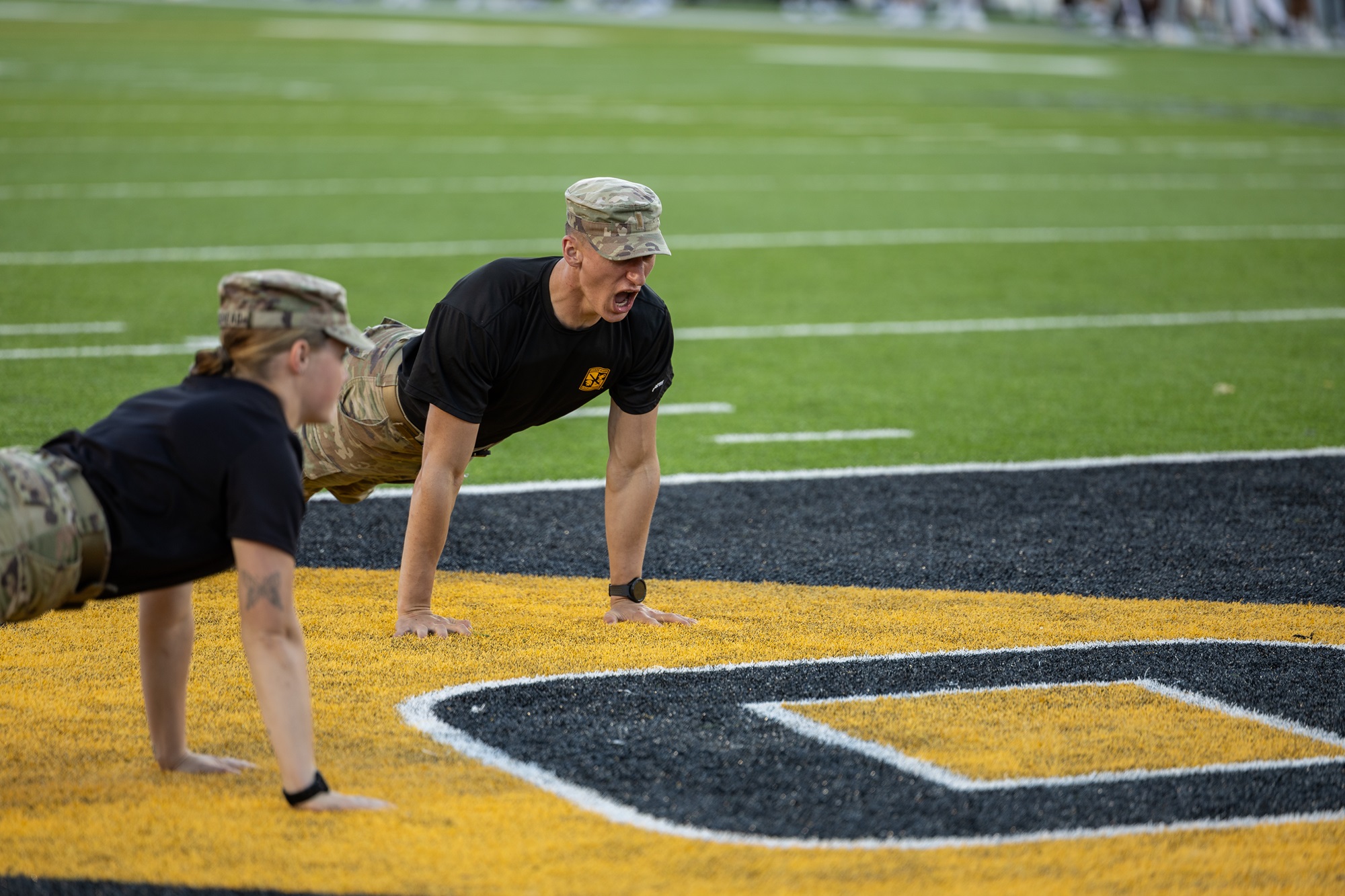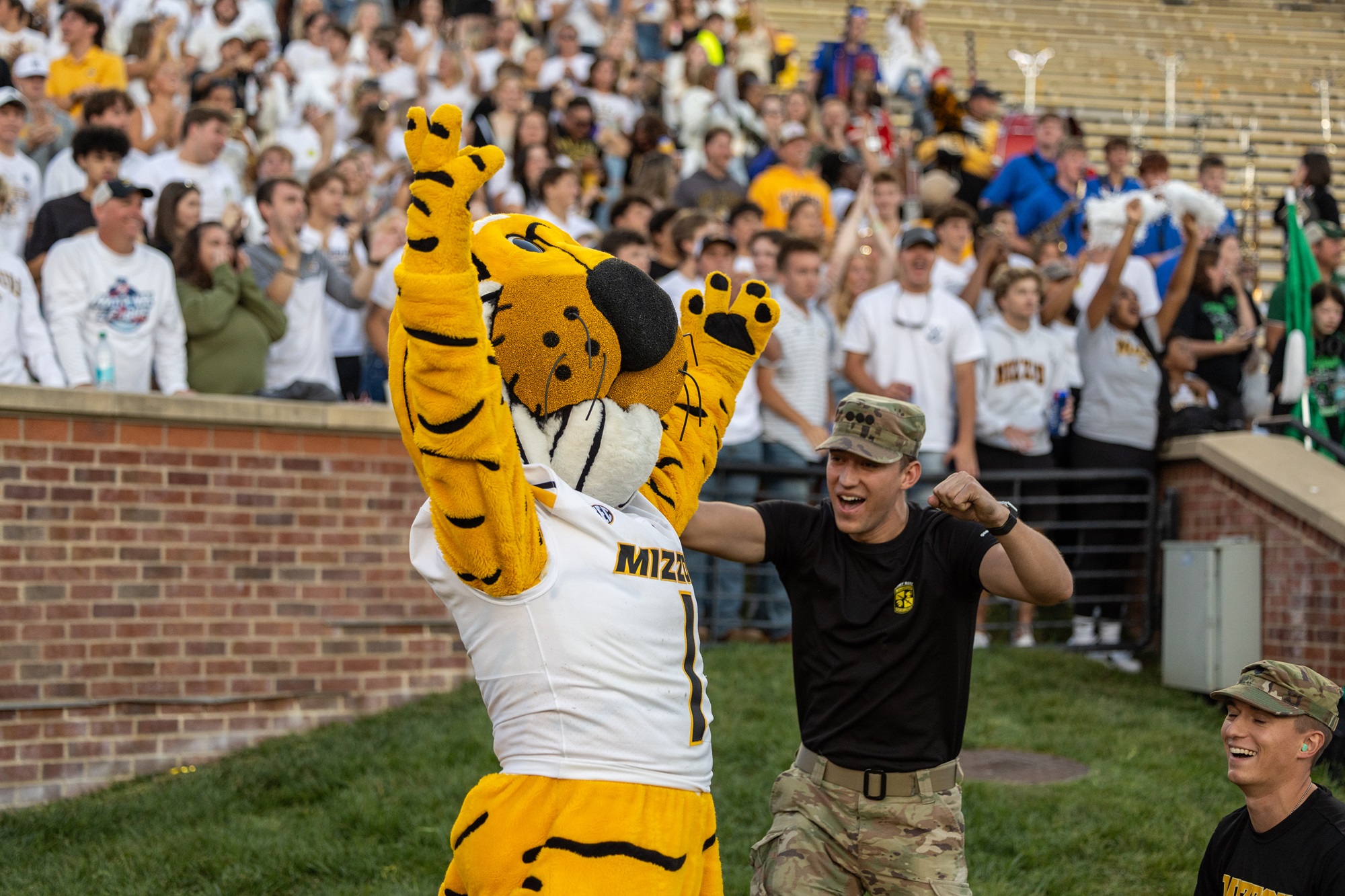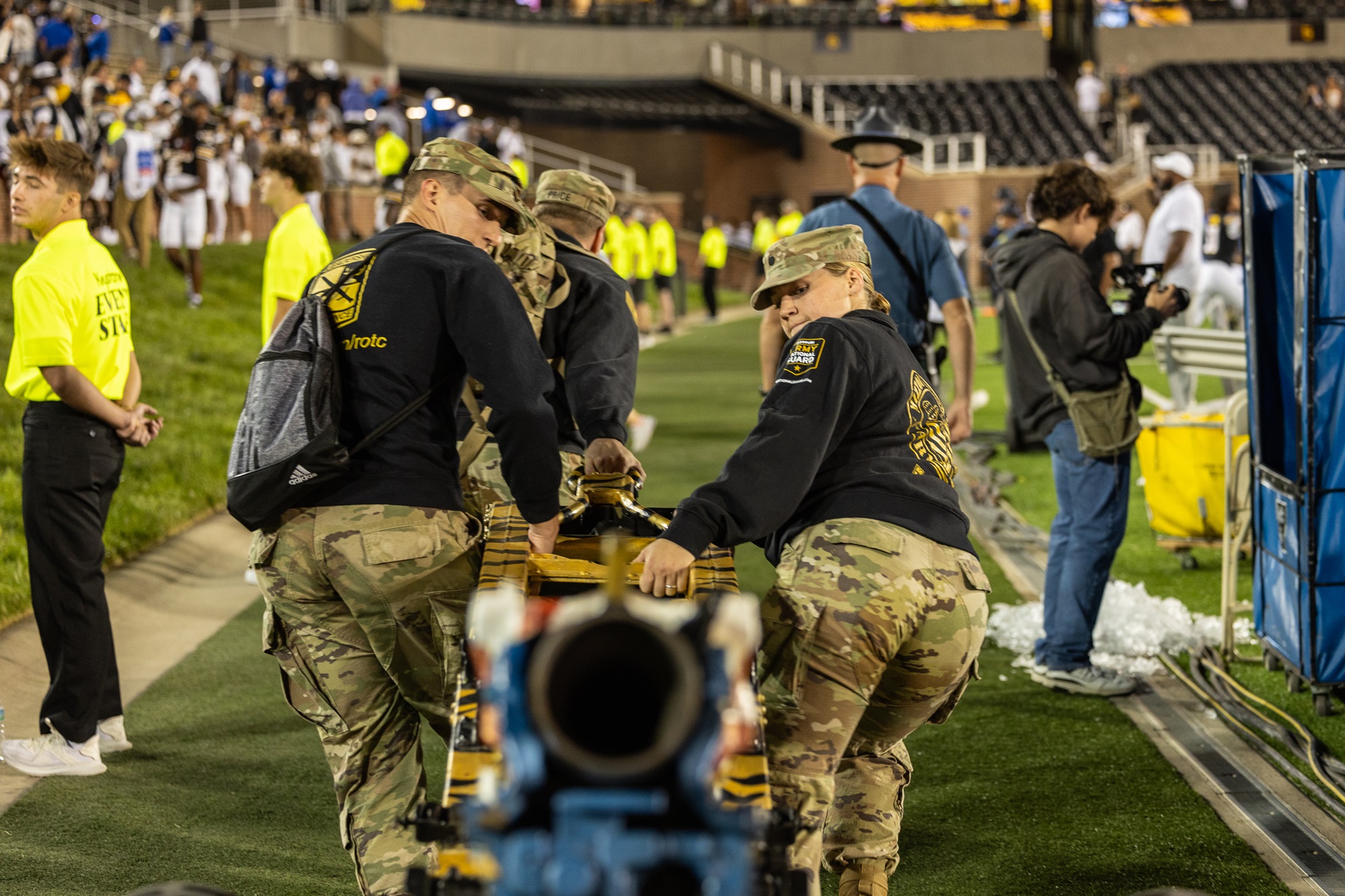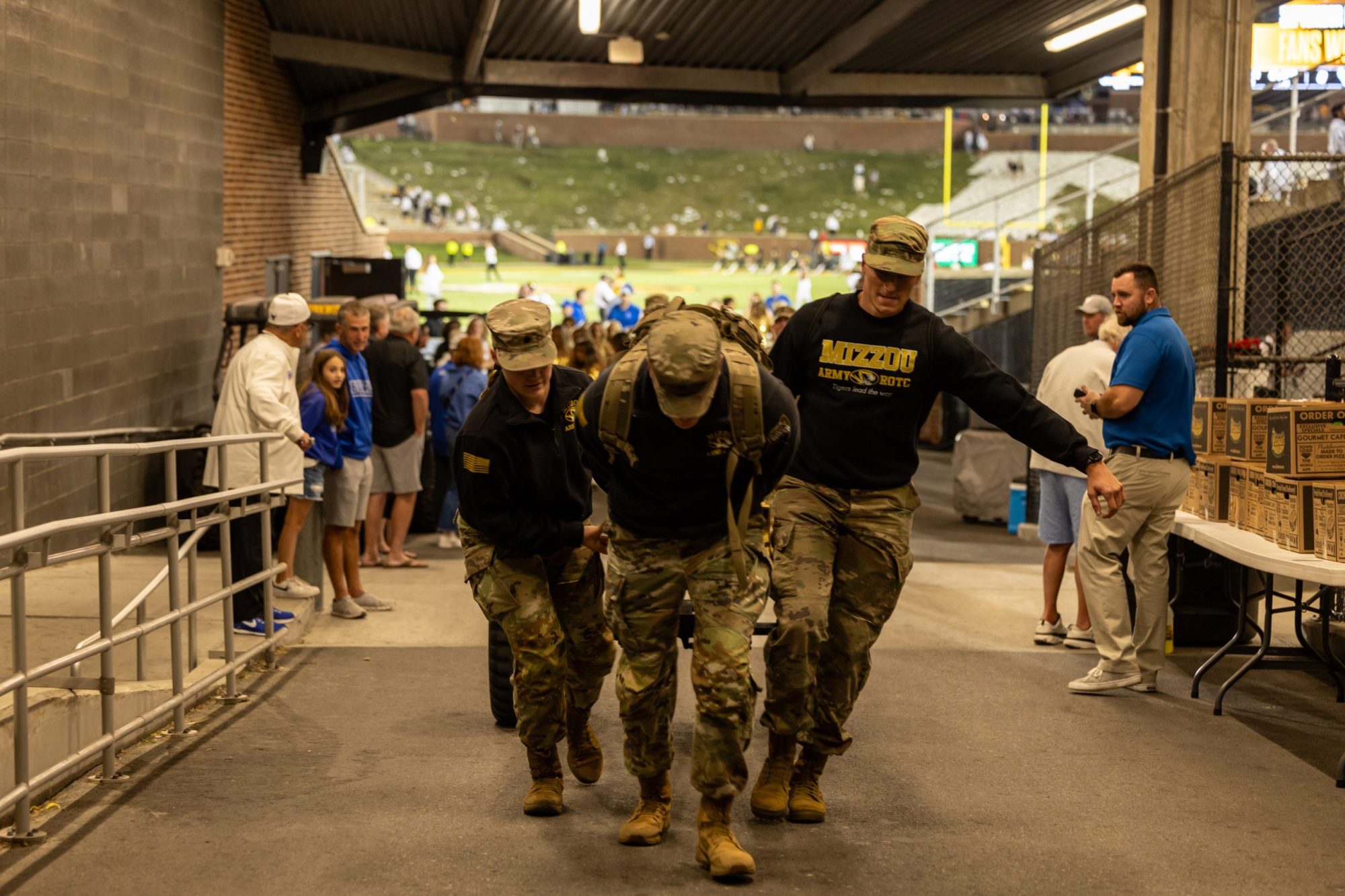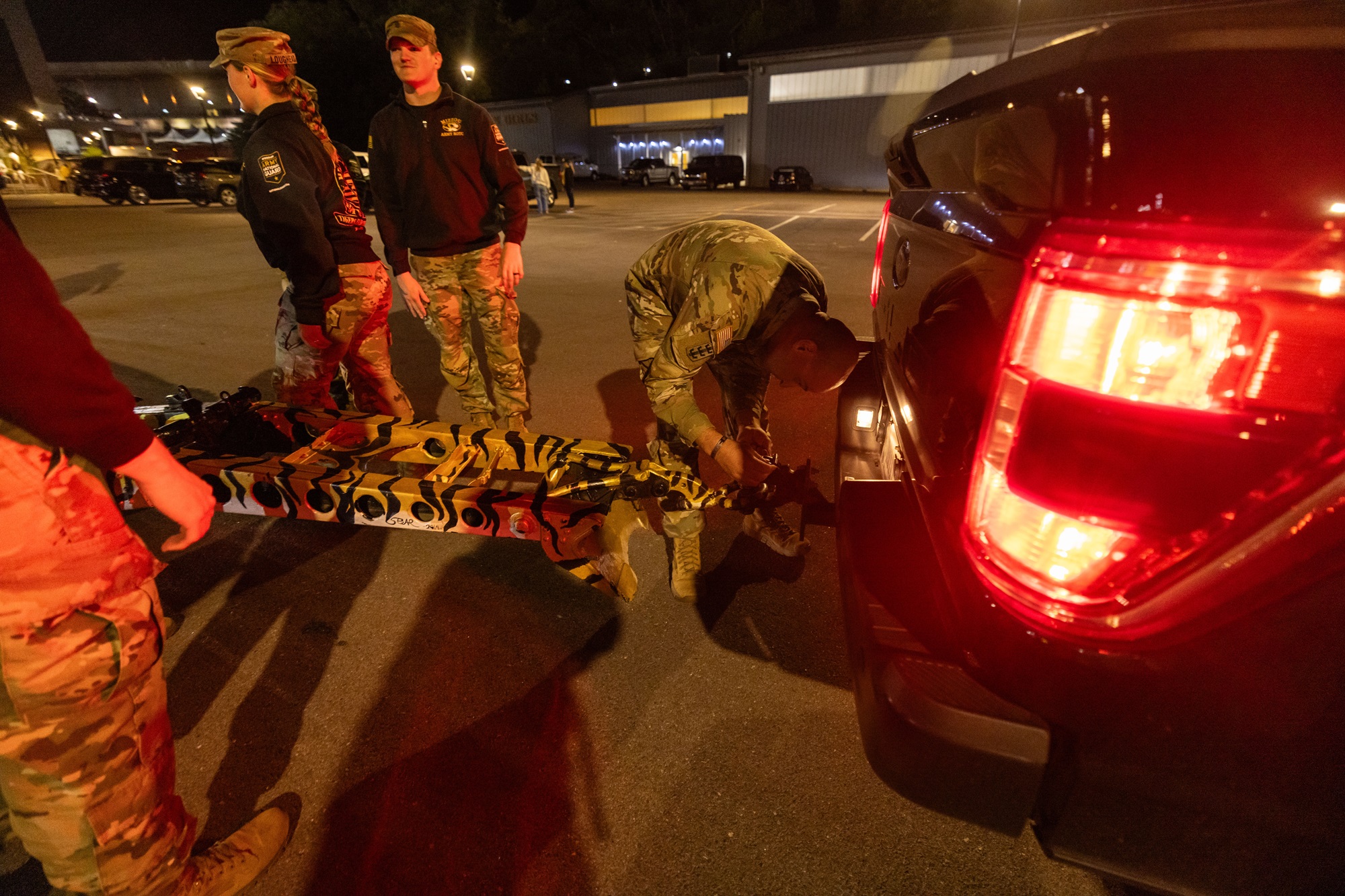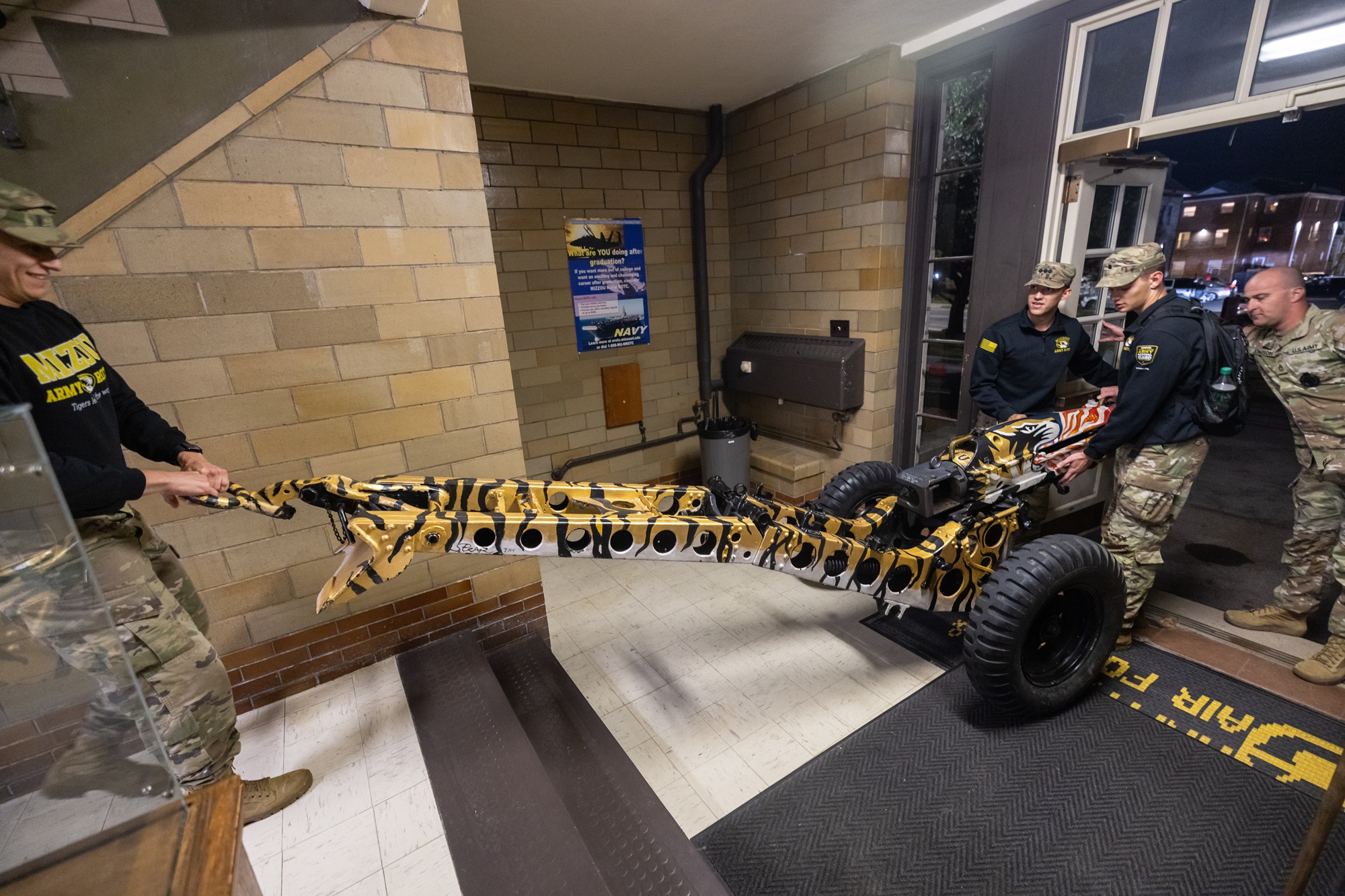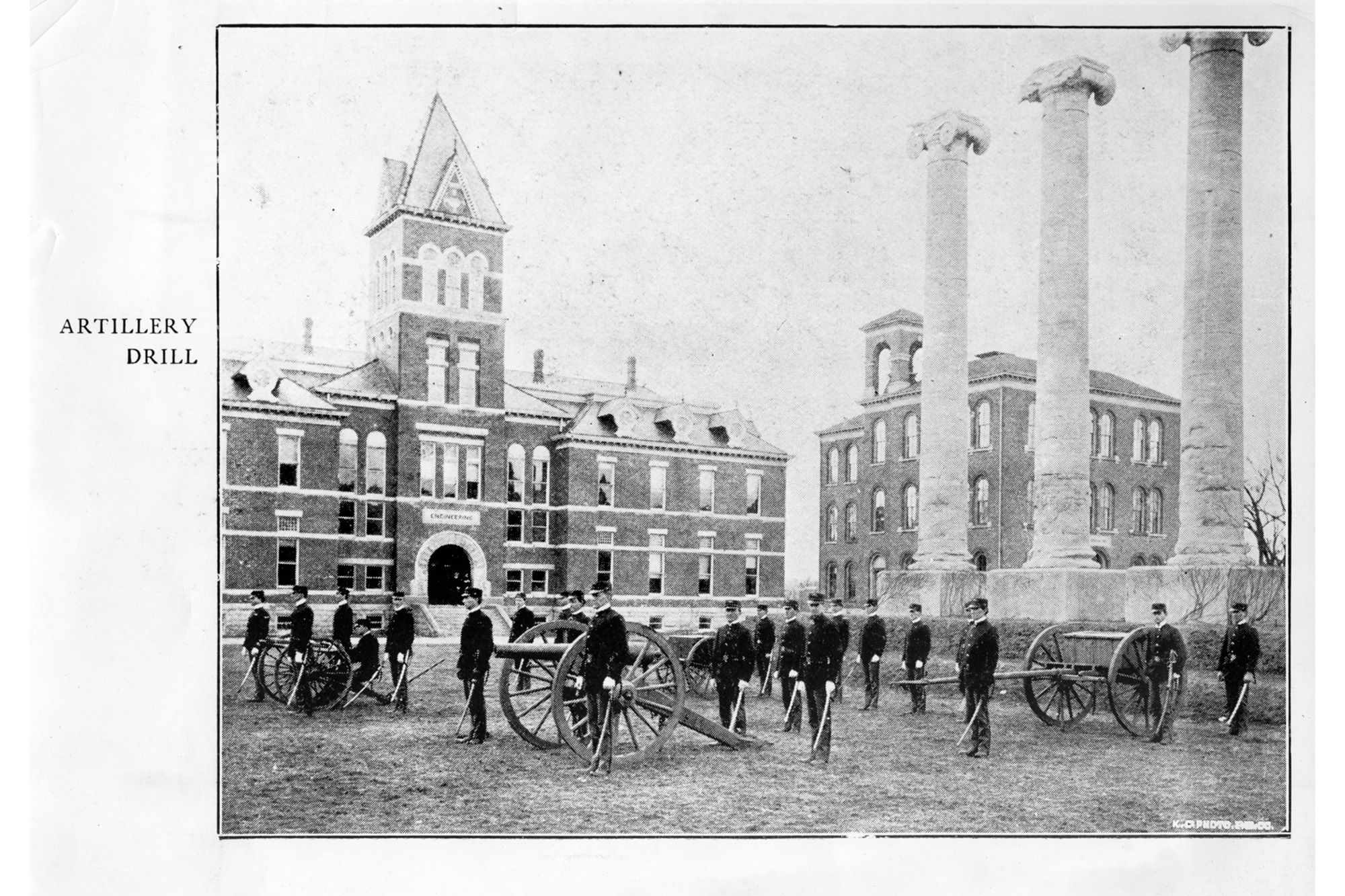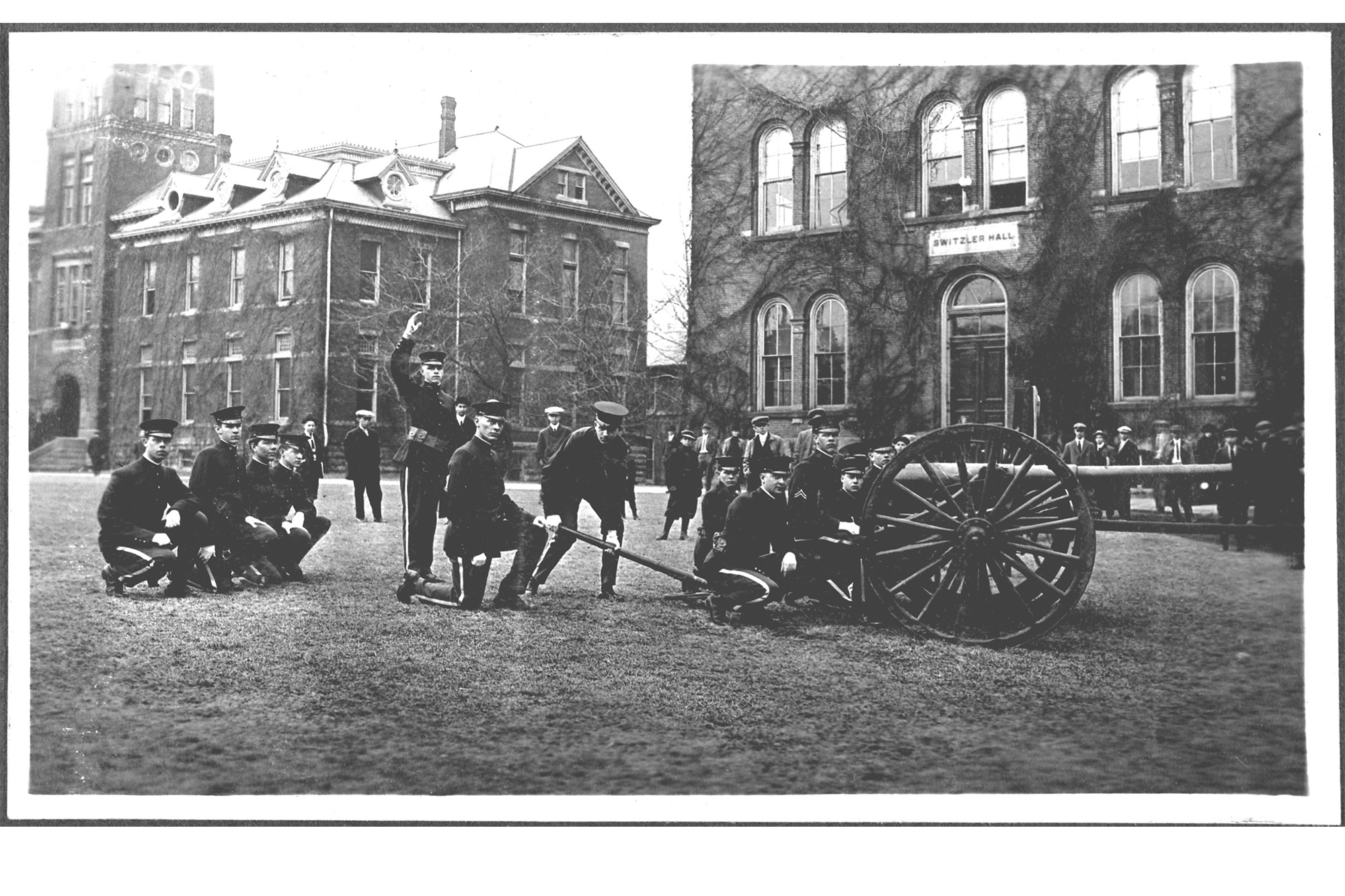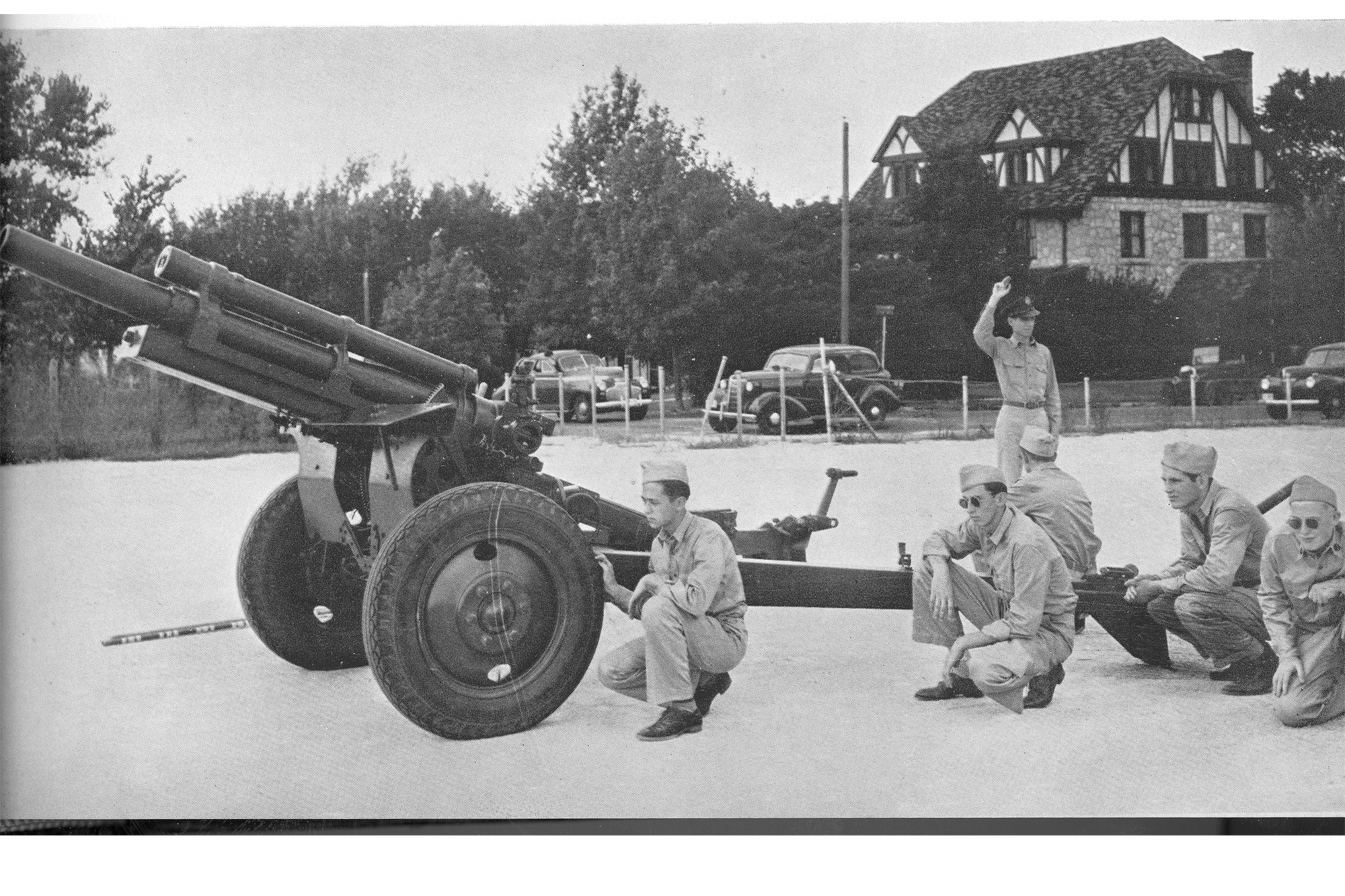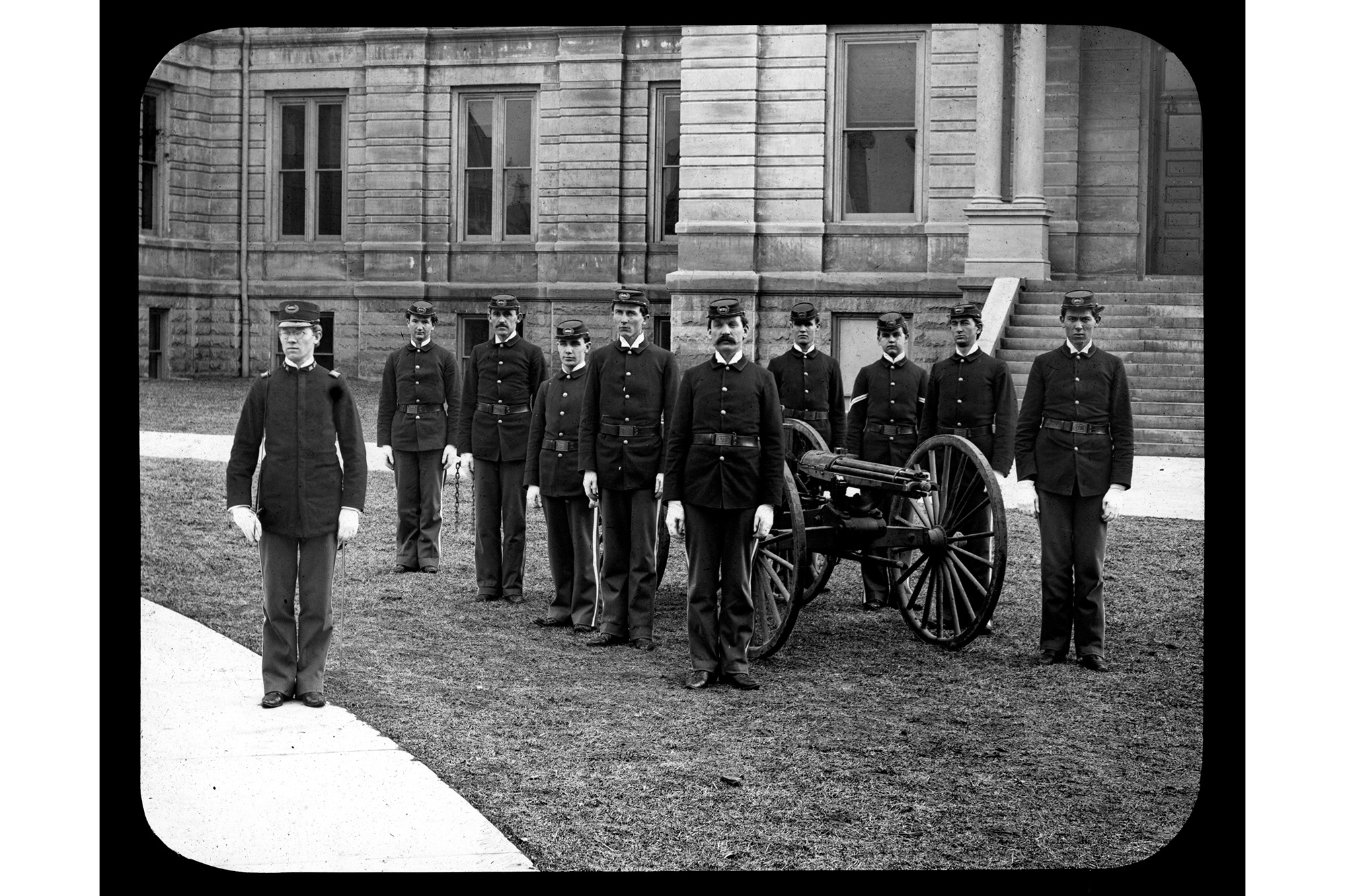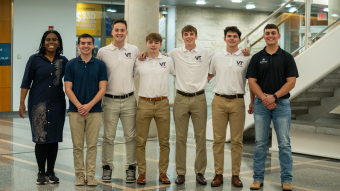By Eric Stann
Nov. 6, 2024
Contact: Eric Stann, 573-882-3346, StannE@missouri.edu
Photos by Abbie Lankitus
BOOM.
Moments after the referees’ whistles pierce the air and their arms shoot skyward to signal a touchdown or field goal at Memorial Stadium, the University of Missouri’s Army ROTC Cannon Crew springs into action. With precision, they fire a blank round from “Mizzou-KA,” the cherished World War II-era cannon that rests on the field just beyond the north end zone. The blast from the 75mm howitzer echoes through the air as smoke billows across the ground.
The crowd cheers.
The Cannon Crew tradition began in 1895 after Mizzou’s football game against the Nebraska Bugeaters. Today, a position on the crew is one of the most sought-after honors for Mizzou’s Army ROTC cadets. Chosen through a highly competitive process, the crew works tirelessly each week to ensure the cannon is primed and ready to fire safely during every home football game.
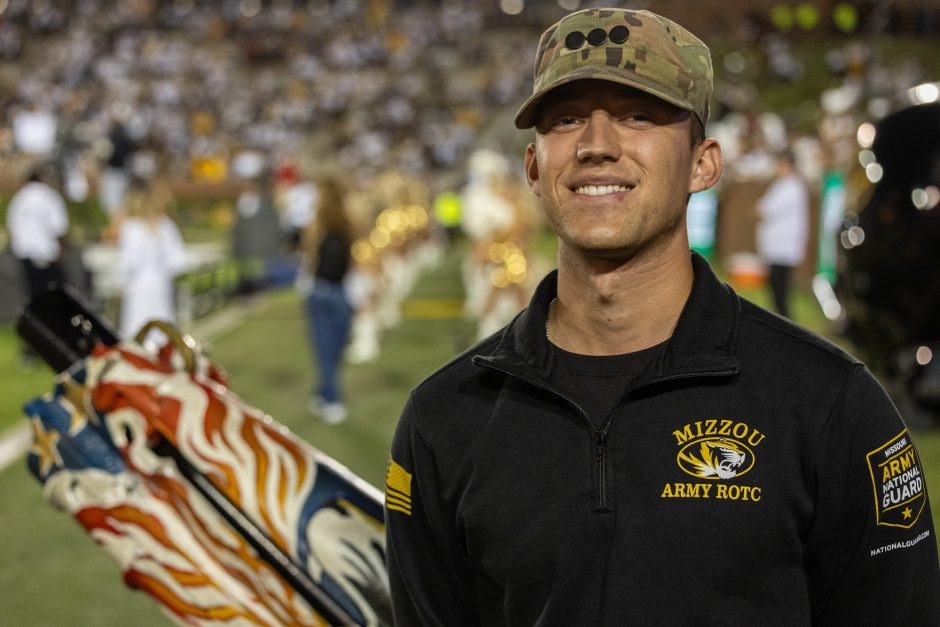
Charles Davidson, a Mizzou senior from Waterloo, Illinois, is in his fourth season on the Cannon Crew. As one of the crew leaders for the 2024 football season, Davidson is responsible for giving the command to fire the cannon during games. He also ensures everyone is at a safe distance while the cannon is in action.
Show Me Mizzou recently followed Davidson for a behind-the-scenes look at game day.
3:50 p.m.: The Cannon Crew arrives at Memorial Stadium.
About 2.5 hours before kickoff, the crew meets up at Crowder Hall — the home of Mizzou Army ROTC. The cannon is rolled out of the building and attached to a pickup truck for its ride to the south end of Memorial Stadium. From there, the cadets must push it more than 100 yards along the sideline to the opposite end of the field. During games, the cannon is located just beyond the east corner of the north end zone.
4:30 p.m.: Stadium gates open.
Ninety minutes before kickoff, Davidson gives the day’s first command to fire the cannon — indicating to fans that Memorial Stadium is officially open. The Cannon Crew’s equipment has changed over the years based on what was available. Earliest versions used Civil-War-era solid shot cannons without a boom. In 1943, they used a 105mm howitzer.
6:01 p.m.: Kickoff.
Davidson (left) gives the order to fire the cannon during the kickoff of the football game. To make it fire, the cadet on the opposite side of the cannon must pull a cord with the right mix of precision and strength to cause the blank 10-gauge round to detonate.
7 p.m.: Tigers score!
When Missouri’s offense reaches the opponent’s 30-yard line, Davidson and another cadet get the cannon ready to fire. After the Tigers score field goals and touchdowns, cadets also do pushups in the north end zone, matching the Tigers’ total points. On average, the cadets do 50 pushups during games.
7:15 p.m.: Truman fires the cannon.
Tonight, after the Tigers score again, Davidson asks Truman the Tiger to fire the cannon. Truman pulls the cord — decorated with a plush Mizzou Tiger Tail — to trigger the firing pin, creating the resulting boom.
9:10 p.m.: Pack up and go home.
After the Tigers secure the home victory, one last shot is fired in celebration. Minutes later, the crew swiftly mobilizes, pulling the cannon more than 100 yards back down the sideline and into the parking lot on the south end of the stadium.
9:30 p.m.: Unload and unpack.
Once the cannon is attached to the truck, the crew heads back to Crowder Hall. Their last job is to roll the cannon up the front steps and into the building. The cannon stays in the lobby between home football games and all through the off-season.
